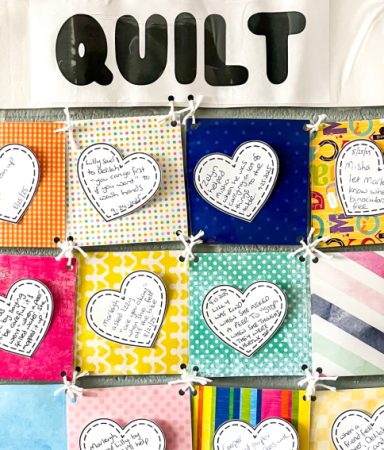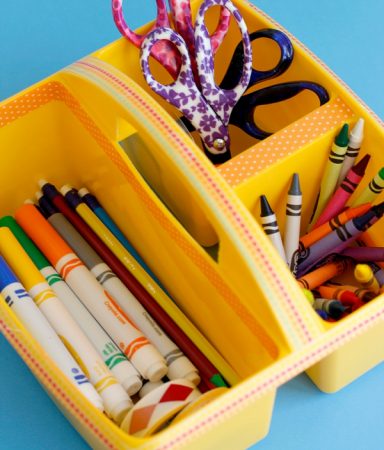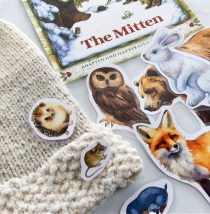After hearing myself say the phrase, “Did you hear me?!” followed by “Are you listening?” for what felt like the hundredth time the other day, I came to the realization that a strategy change was in order with some of these games for encouraging the art of listening. What I was doing (expecting my 3 year old to know how to listen when she was busy doing something else) clearly wasn’t working so well.

I firmly believe in the concepts from books like Easy to Love, Difficult to Discipline and Positive Discipline – our children aren’t born knowing how to act or react to situations, they learn from watching the behavior we model (and really, should we expect them to behave more maturely than many adults?). Misbehavior can be an opportunity to teach if we can remember to take a deep breath before we react.
So the first thing I needed to remember was to demonstrate good listening skills myself. No more half listening while changing a diaper or making dinner. If I needed to finish something before I could listen, I was going to try and remember to say so.
Next I needed to teach my daughter how to listen and help her practice. I find it’s more effective to teach and practice something by making it a game!
5 Games to Encourage the Art of Listening
- Playing Store– Here we are playing store. We set up the room accordingly and take turns playing the employee and customer. This is a good way to practice listening as well as manners, counting, colors, and many other concepts you might be working on. It’s also a fun way to foster creativity and vocabulary.
- Simon Says – At just barely 3, my daughter still doesn’t quite understand the concept of Simon Says, but we’re working on it. Even so, this is a great way to practice listening. We take turns being Simon and following directions. Eventually she will be listening for the distinction of what Simon is saying. This can be great exercise as well, and is a fun way to review body parts and descriptors like above, behind, over, etc.
- Telephone – This old classic is a great game for a group. For younger children, it is also a way to practice whispering.
- Scavenger Hunt – Depending on ages, this can be verbal and written or picture oriented. My daughter loves Map from Dora the Explorer, so we use a combination of verbal and picture clues. I let her set up maps for me to follow as well. Each time I include special instructions for her to remember, such as, “When you find the second clue, be sure to bring it to me and give your sister a kiss. Then look for the third clue.”
- Story Mix Up – When telling familiar stories, I will make changes to see if my daughter is listening. She almost always catches me, but if not I sneak in even more outlandish changes until she does!
 Steph shares her problem solvin’ approach to parenting and life at Problem Solvin Mom. She can often be found playing with her two girls in the kitchen or at the craft table, and sometimes on twitter as @psmom.
Steph shares her problem solvin’ approach to parenting and life at Problem Solvin Mom. She can often be found playing with her two girls in the kitchen or at the craft table, and sometimes on twitter as @psmom.








I love these ideas! I teach 3-6 yr olds and we play a game as a group (and one on one).
I say “if you are a girl please stand up and hop 3 times” or “the children whose name begins with A please find your index finger”
As you can see, it is made up on the spot.
It encourages listening skills, observation skills and coordination.
Teacher Teacher – I love the idea for rhyming. Kids love all kinds of silly games!
Good ideas. Rhyming can also be a fun way to encourage listening.
A variation on simple rhyming is to break the words into 2 parts and let them figure out the entire word. Let me explain what I mean. Let’s say you are thinking of the word “gumball.” You give the clues as follows: the first part rhymes with “hum,” the second part sounds like “wall.” Saying “humwall” together for the younger children is good because they may like the silliness of the sound.
Thanks so much for these great ideas. They are perfect not only for my DS but my DH too!
Thanks so much for posting this! We have been having a lot of problems with our young son and have found out that it may be related to a learning ‘difference’ these games might just be what we need to help him out! Your post couldn’t be more timely.
I can not even wait to get home and play store. I completely forgot about Simon Says too. Great Tips today!
When our kids were in Kindergarten the teacher used large PFC elbows that the children held like telephones. This gave them the ability to hear what they were saying – so important when learning to read. I think they also learned something about volume, too :)
Great ideas! ty!
niki
Awesome post. Love it!
I loved these. My daughter teaches Early Childhood special ed and I told her all about them….and then sent her a link to you.
Kids can learn so much through laying games!